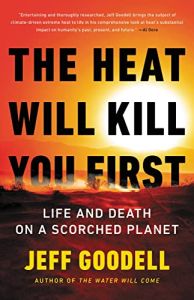
The Heat Will Kill You First
Life and Death on a Scorched Planet
Recommendation
Climate researcher Jeff Goodell describes the accelerating impacts of global warming with real-life stories illustrating scientific facts. Drawing from his travels, studies, and relationships, and writing with unusual skill, he warns that all living things will seek escape from the escalating heat, relentless storms, drought, and rising seas. Adaptation won’t be adequate for hundreds of millions of Earth’s inhabitants, including humans. Goodell also notes that increasing heat exposes global injustice and instability. Rich people install air conditioners or move, while the poor suffer. His conclusion: The best way to blunt these dire outcomes is to stop burning fossil fuels.
Summary
About the Author
Jeff Goodell is also the author of seven other books, including The Water Will Come: Rising Seas, Sinking Cities, and the Remaking of the Civilized World. He covered climate change for more than two decades at Rolling Stone and other publications. He is a 2020 Guggenheim Fellow.









Comment on this summary